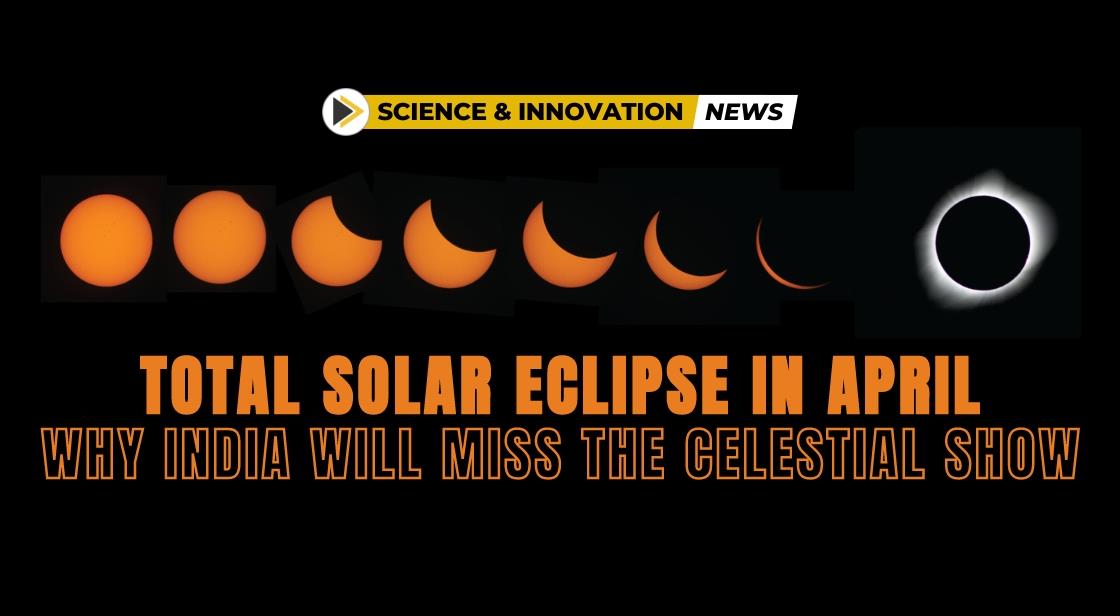Total Solar Eclipse in April: Why India Will Miss the Celestial Show

News Synopsis
A total solar eclipse is on the celestial calendar for the night of April 9, during which the Moon will pass directly between the Earth and the Sun, obscuring the Sun completely. Scheduled between 9:13 PM IST on April 9 and 2:22 AM IST on April 10, this astronomical event will offer a captivating spectacle for observers in specific regions.
A Total Blackout of the Sun (But Not for Us)
This upcoming eclipse will be a total solar eclipse, where the Moon completely covers the Sun for a brief period. The event will occur between 9:13 PM IST on April 9th and continue until 2:22 AM IST on April 10th. While the eclipse itself won't be directly observable from India, skywatchers in other parts of the world will have a front-row seat. Those in Mexico, the eastern United States, and southeastern Canada will be able to witness this awe-inspiring phenomenon.
Don't Despair, You Can Still Catch the Action
Even though skywatchers in India won't be able to see the eclipse directly, there are still ways to experience this incredible event. Many organizations and astronomy enthusiasts will likely be hosting livestreams of the eclipse. A quick online search around the time of the eclipse will help you find these live streams.
A Nighttime Phenomenon (April 9th-10th)
This total solar eclipse will occur between 9:13 PM IST on April 9th and 2:22 AM IST on April 10th. While not observable from India, the eclipse will be visible from prime locations across:
-
Mexico
-
Eastern United States
-
Southeastern Canada
For those unable to travel to these regions, fret not! The eclipse is expected to be broadcasted live through various online streams, allowing viewers worldwide to witness this awe-inspiring astronomical event.
Why India Misses Out Solar eclipses This Time
Solar eclipses occur when the Sun, the Moon, and Earth align perfectly in a straight line, with the Moon positioned between the Sun and Earth. This alignment casts a shadow from the Moon onto Earth's surface. However, the Moon's orbit around Earth is tilted at a slight angle (about 5 degrees) compared to Earth's orbit around the Sun.
Because of this tilt, the Moon typically passes above or below the Sun during its monthly revolution around Earth. Only when the Moon's path intersects Earth's orbital plane at the same time as a New Moon (when the Moon appears invisible from Earth) can a solar eclipse occur.
A Narrow Shadow and Limited Visibility
Even when a solar eclipse does happen, it's not visible from everywhere on Earth. The Moon's shadow is relatively small, typically only a few hundred kilometers wide. This means that only a limited area on Earth experiences the total darkness of a total solar eclipse. The path of totality, as the area experiencing complete darkness is called, travels across the Earth's surface as the Moon's shadow sweeps across. Unfortunately, for the April 9th eclipse, the path of totality won't cross over India.
You May Like









